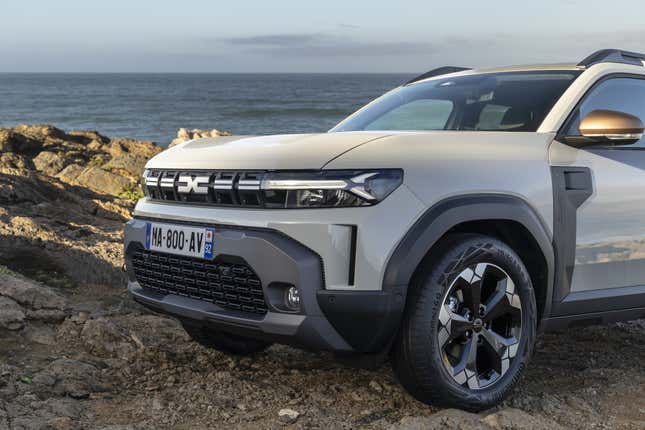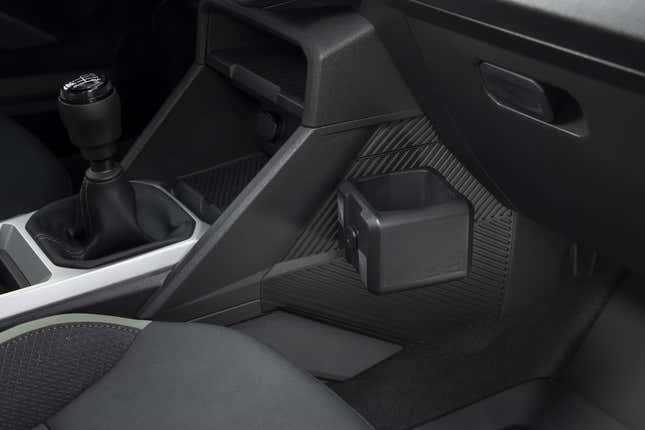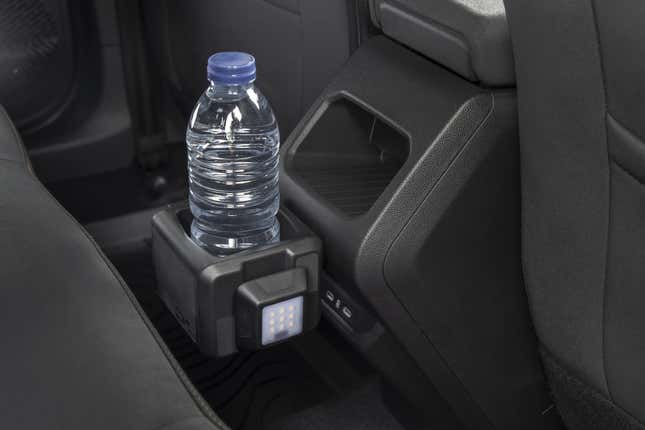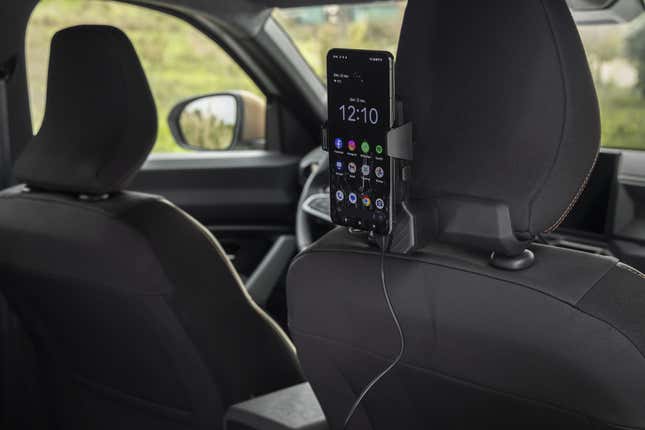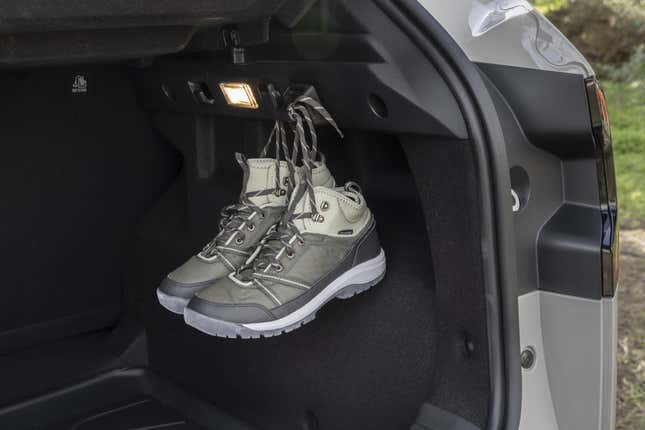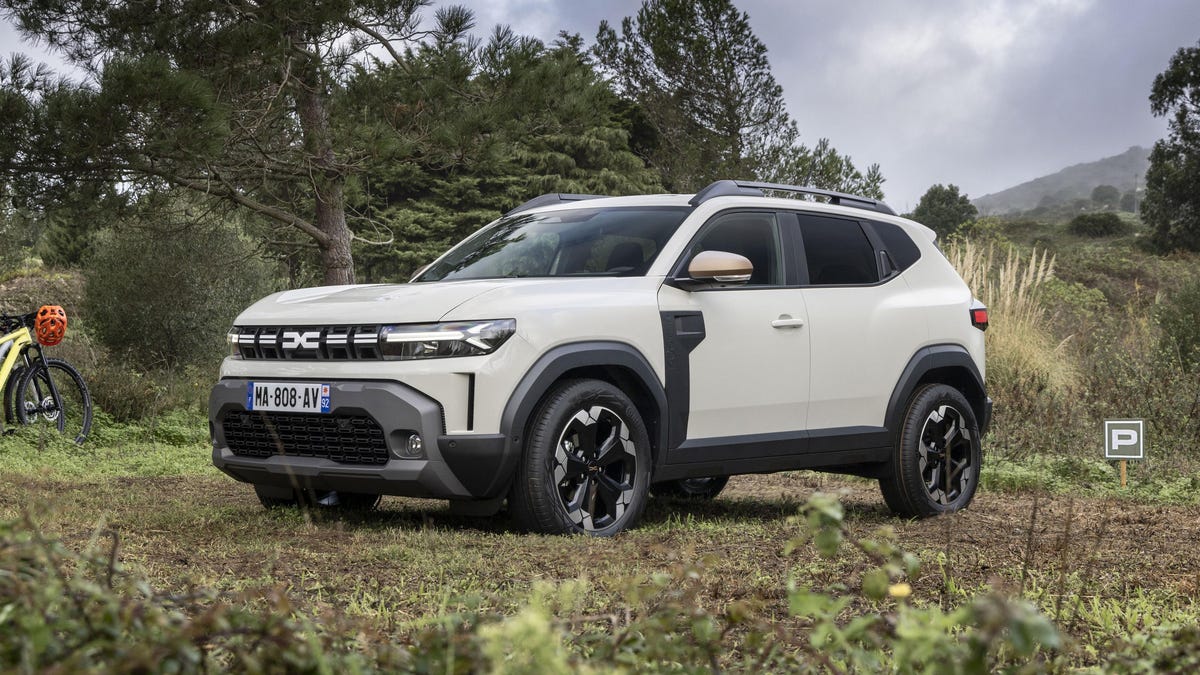Romanian manufacturer and Renault subsidiary Dacia has sold more than 2.2 million units of its Duster SUV since the model’s launch in 2010 – 1,000 new ones are built every day! – making it Europe’s most popular SUV and a huge success in markets like Latin America. The Duster has been renowned for its off-road capability and super affordable price point, and now there’s a totally new third-generation Duster that has a fantastic design and major tech and performance improvements without sacrificing what made the previous models so popular.
First previewed by the Bigster concept in 2021, he third-gen Duster is based on the same CMF-B platform that underpins Dacia’s Jogger and Sandero models, as well as Renault’s Clio and Captur and Nissan’s Juke and Note. Dacia says the new platform allowed for greater passenger and luggage space than before without making the Duster’s dimensions markedly bigger – there’s even a Sleep Pack available for the cargo area that features a 3-in-1 box for the cargo area with built-in storage and a double bed that folds out in under two minutes.

A new turbocharged 1.2-liter 3-cylinder engine has a 48-volt mild-hybrid system with a 0.9-kWh battery; it puts out 128 horsepower and can only be had with a 6-speed manual and four-wheel drive. Dacia says this powertrain is 10 perfect more efficient than an equivalent non-hybrid engine. Also new is a full-hybrid model, which pairs a 1.6-liter inline-4 engine with a 1.2-kWh battery pack and two electric motors, for a total of 140 horsepower. This powertrain can be driven in fully electric mode for 80 percent of the time in cities, according to Dacia, and both hybrids have regenerative braking.
There’s also an entry-level mild-hybrid turbocharged 1.0-liter 3-cylinder that uses both gas and LPG. It can hold 13 gallons of gas and 13 gallons of LPG, in separate tanks, and a button on the dash switches between the two. Dacia says this powertrain gives the Duster a range of more than 800 miles, and it’s only available with front-wheel drive.
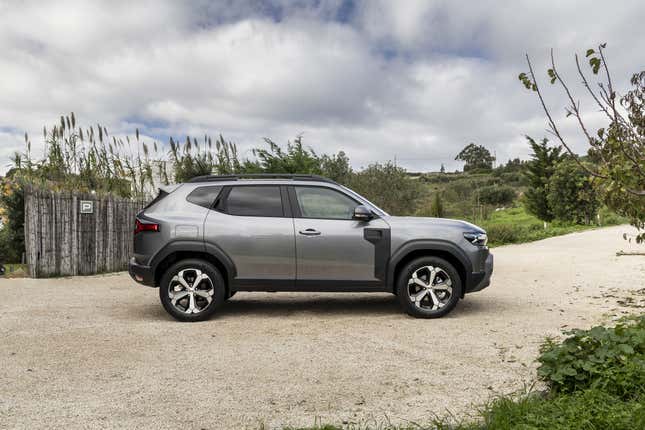
Four-wheel-drive versions of the Duster have 8.5 inches of ground clearance, only about an inch less than a stock Jeep Wrangler. The Duster 4×4 has five different drive modes, including ones for snow, mud/sand, and a general off-road mode that automatically distributes torque to each axle. The new Duster also has hill-descent control and off-road info pages for the infotainment system.
Previous generations of Duster were cute and chunky but never especially handsome or memorable. That’s not the case for the new Duster, which has fantastic proportions and great detailing. Its big squared fenders remind me of an old rally car, and it has a nice, wide stance. Dacia’s new X logo (the letters D and C put together) is echoed in the grille pattern and slim Y-shaped headlights, and the prominent taillights poke out from the rear end.
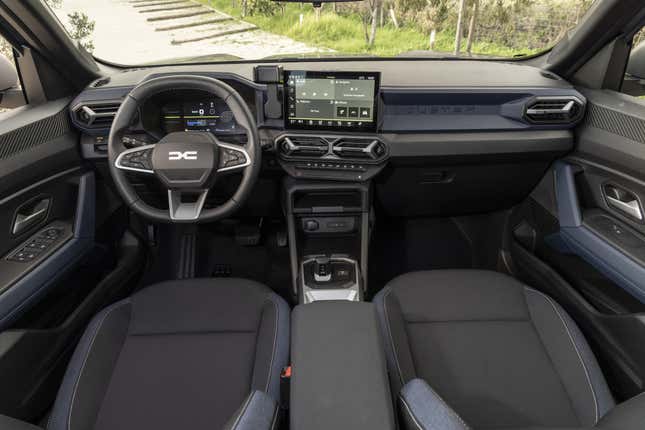
Dacia describes the black plastic trim surrounding the Duster’s lower body and fender flares as its “protective belt,” which is designed to protect the body from scratches and dings, but it’s a bit different from traditional crossover body cladding. All of this cladding is made from Starkle, a material invented by Dacia’s engineers that’s made from 20% recycled polypropylene plastic and is paint free. The front and rear skid plates are also dyed in the mass – meaning the plastic is colored before it’s injected into the mold – so its color is unalterable and even more resistant to scratches. Dacia says that 20% of the Duster’s plastic overall is recycled, plus it has no chrome trim or animal leather.
The interior looks a little more conventional, but there’s some cool stuff going on. The Y-shape motif is present in the door panels, air vents and other areas, and the dashboard is canted towards the driver. It’s available with a 7-inch digital gauge cluster and and a 10.1-inch center touchscreen, the latter of which has wireless Apple CarPlay and Android Auto, navigation and over-the-air updates. Even the base Duster has a 3.5-inch screen in the gauge cluster to control your media, and you can use a smartphone mount on the dash and a downloadable app to act as its own infotainment system.
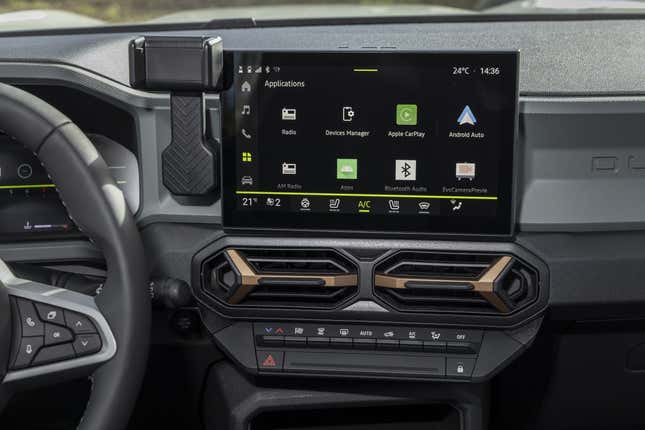
Speaking of phone mounts, the Duster is available with up to six attachment points for YouClip, an accessory grip system. In addition to holding smartphones or tablets (including with wireless charging), there’s also a storage pouch and a “smart” accessory that has a bag hook, a cupholder and a reading lamp. It looks like a smart way to make the Duster compatible with all sorts of different types of devices, and it looks like it would be easy for other companies to come up with their own accessories, or even for customers to 3D print their own designs. The mounting points can hold up to 18 pounds.
70% of Duster customers buy one of the higher trim levels, according to Dacia, but even the base Duster offers more safety and tech features than before. Loaded Dusters get things like 18-inch wheels, a 6-speaker 3D sound system, a heated steering wheel, automatic climate control, keyless entry and more.
Dacia promises the new Duster will start at under €20,000 in Europe, slightly more than the outgoing model but still the most affordable SUV in the segment. With the surge in popularity of Chevy’s new Trax and cars like the Subaru Crosstrek Wilderness, I think the Dacia Duster could be a hit in the US. With Renault set to bring it to Mexico, would it really be that hard?
